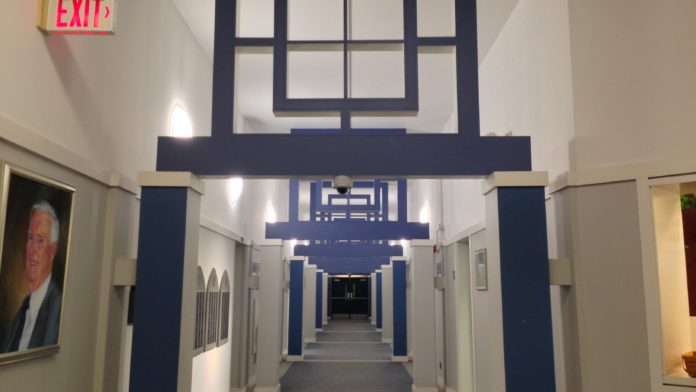by Alastair Pearson ’14
The endowment fund, contrary to popular misconceptions that it may support construction, teacher salaries or golf outings for the faculty, is used primarily for the purpose of funding tuition assistance. Just five percent of the fund is spent every year, to keep the principal intact. And that core hub of capital is thriving.
The Saint Ignatius endowment fund reached an all-time high on August 14, 2013, recovering from a recession-era low point in March 2009. The endowment fund gains bolstered the school’s net assets.
Total value of the fund in non-inflation adjusted dollars nearly doubled from 2002 to 2007, before plummeting to the 2009 nadir and and beginning a recovery that reached pre-recession levels in June 2012.
The school’s chief financial officer, Richard Klingshirn, said that the fund’s rise to the August peak was the result of a strong market and new donor contributions.
“This is frankly a lesson in economics and finance, which is to be patient and wait it out,” Klingshirn said. “Just have faith in the markets, and they do come back.”
The return for the endowment fund during the school’s 2013 fiscal year ending June 30, 2013, was 12 percent, which coupled with new contributions helped to push the fund $10 million higher than the year before. Klingshirn said the results were excellent but atypical.
“It’s not going to be 12 percent every year,” he said. “If we were going to look over any 10, 20 year span, we’d expect to see six or seven percent.”
The investment sub-committee of the Board of Regents, which Klingshirn sits on as staff representative, conducts quarterly reviews of the endowment fund’s performance and may add or drop investment advisors. Klingshirn credited the board’s policy with the endowment fund’s gains.
“A sound and prudent investment policy, coupled with rigorous and disciplined investing principles and a steady stream of new contributions from many generous benefactors, have resulted in a current market value that is more than double the value of 10 years ago,” Klingshirn said.
About $3 million a year is donated to the endowment fund, which works in conjunction with the annual fund to extend financial aid to students. The annual fund is a financial aid fund that exists for the duration of each fiscal year.
Other funding sources for financial aid include the annual Christmas Concert and the Scholarship Drive. Donations for new construction like Gibbons Hall are solicited and coordinated on a case- by-case basis and financial support for those projects comes from outside the endowment fund and annual fund.
Klingshirn said that the school spends around five percent of the endowment on tuition assistance per year, contributing to a total of $4.5 million in aid, which supports close to 50 percent of the student body.
John Morabeto, Vice President of Institutional Advancement, said that Ignatius stands out among peer institutions for total financial aid generosity. Ignatius has one of the top five largest endowment funds for Jesuit high schools in the United States, according to Advancement office data.
“Of the 59 largest Jesuit high schools in the country, Saint Ignatius provides the most financial assistance,” Morabeto said.
The high ranking is for total aid, not aid per capita. The school does not give full scholarships.
“We only have so much,” Klingshirn said. “If something is free, it doesn’t have value.”
The advancement office is preparing a campaign to raise $20 million for the endowment fund, which would provide another $1 million per year for tuition assistance. Jeff McCormick, Director of Development and Planned Giving, said that the school recognizes the sacrifice required to pay tuition.
“The financial need of our community has increased dramatically,” McCormick said. “Our tuition continues to go up to reflect our costs.”
Tuition, counting fees tacked on to the official total, is over $14,100. And Klingshirn said that number still does not reflect the financial costs of attending Ignatius, citing the $2,000 disparity between tuition and the $16,100 the school spends per student. The gap is made up with income from summer programs, the bookstore, and miscellaneous revenue sources.
“Every student is in essence getting a $2,000 a year break,” Klingshirn said.
The school’s budget is approximately $23.5 million. As a non-profit institution, Saint Ignatius must use revenue to further the goals of the school. It does not distribute dividends or have shareholders.
“Our goal, which we’ve achieved this year, which we tend to achieve, is to break even,” Klingshirn said. “That doesn’t prevent you from making money, but you’re just obligated to use profits to re-invest in the institution.”
Lisa Metro, Director of Communications, said that given the financial difficulties affecting other non-profit Catholic schools, the endowment fund is vital to keeping Ignatius financially sound.
“The goal is to make a Saint Ignatius education possible for all, regardless of economic disadvantages,” Metro said. “Having a strong endowment keeps our school strong.”






